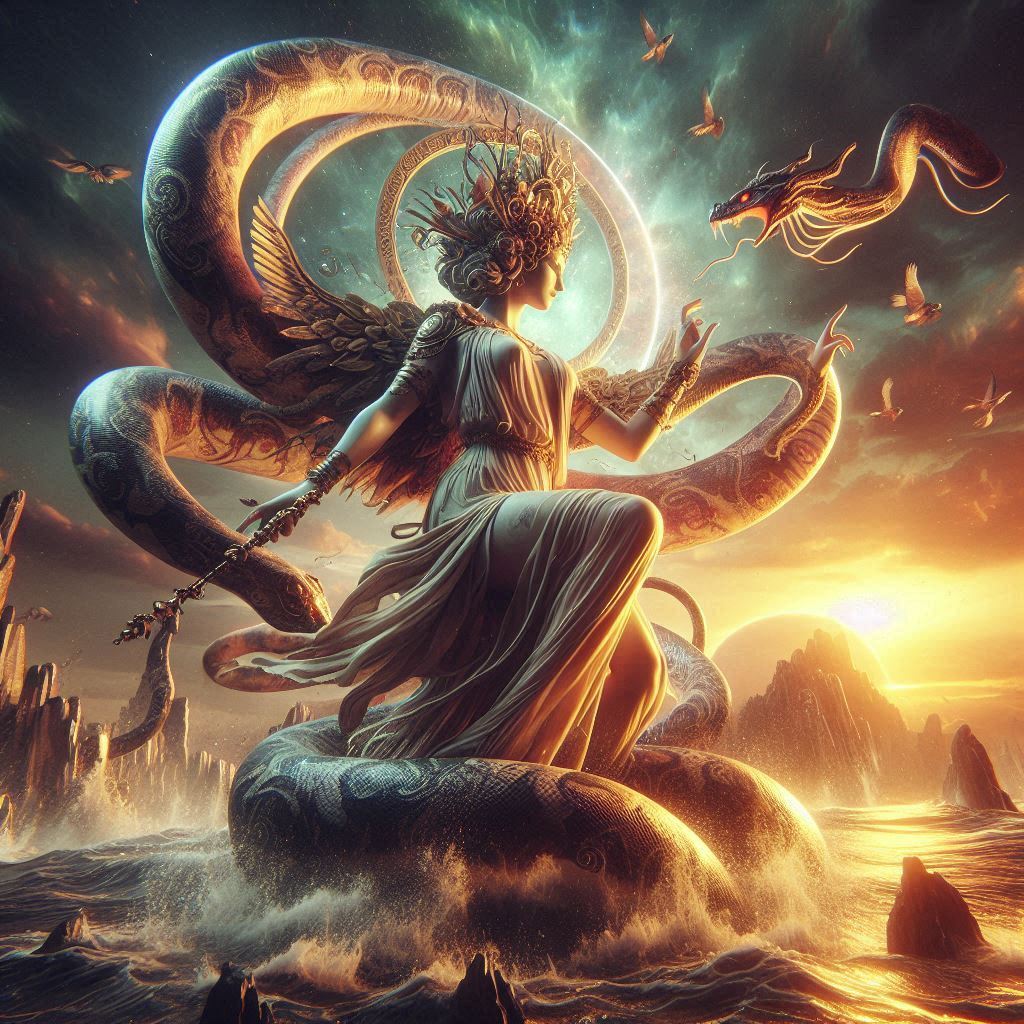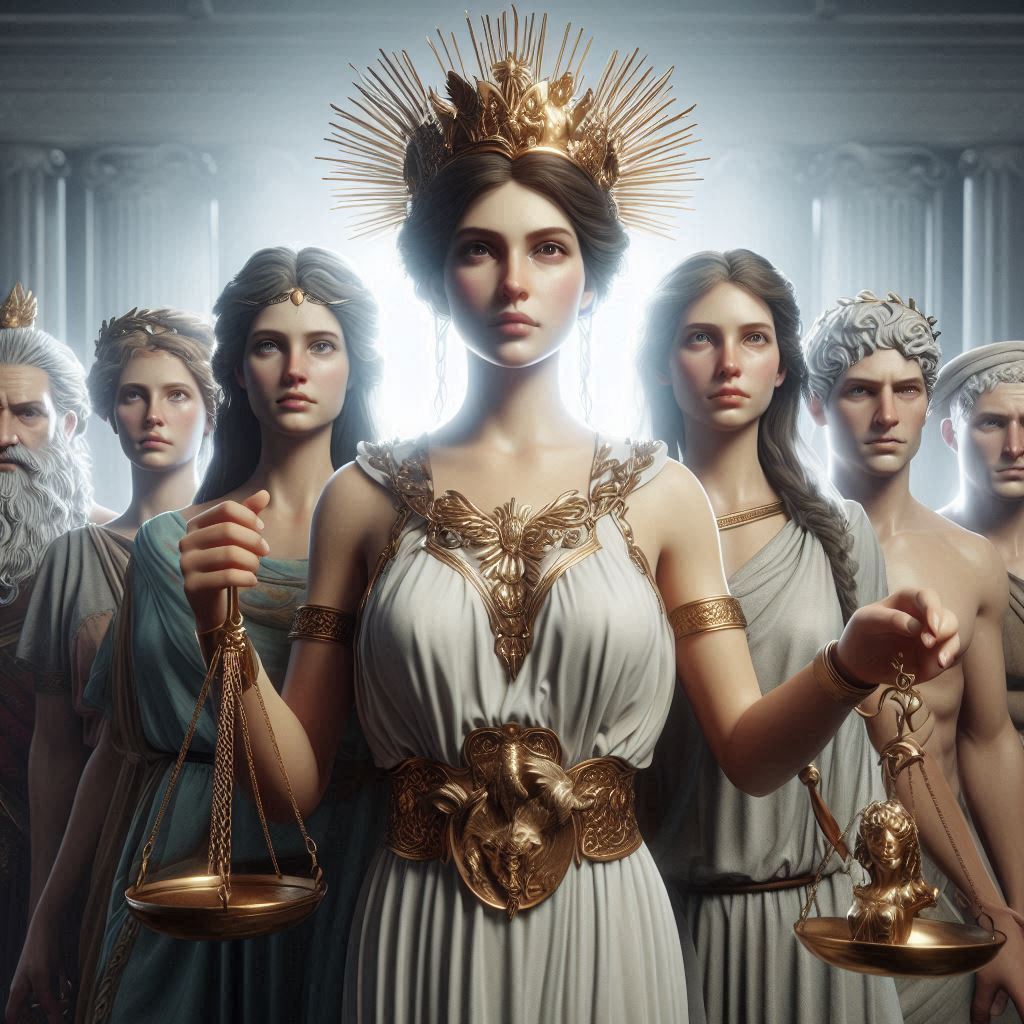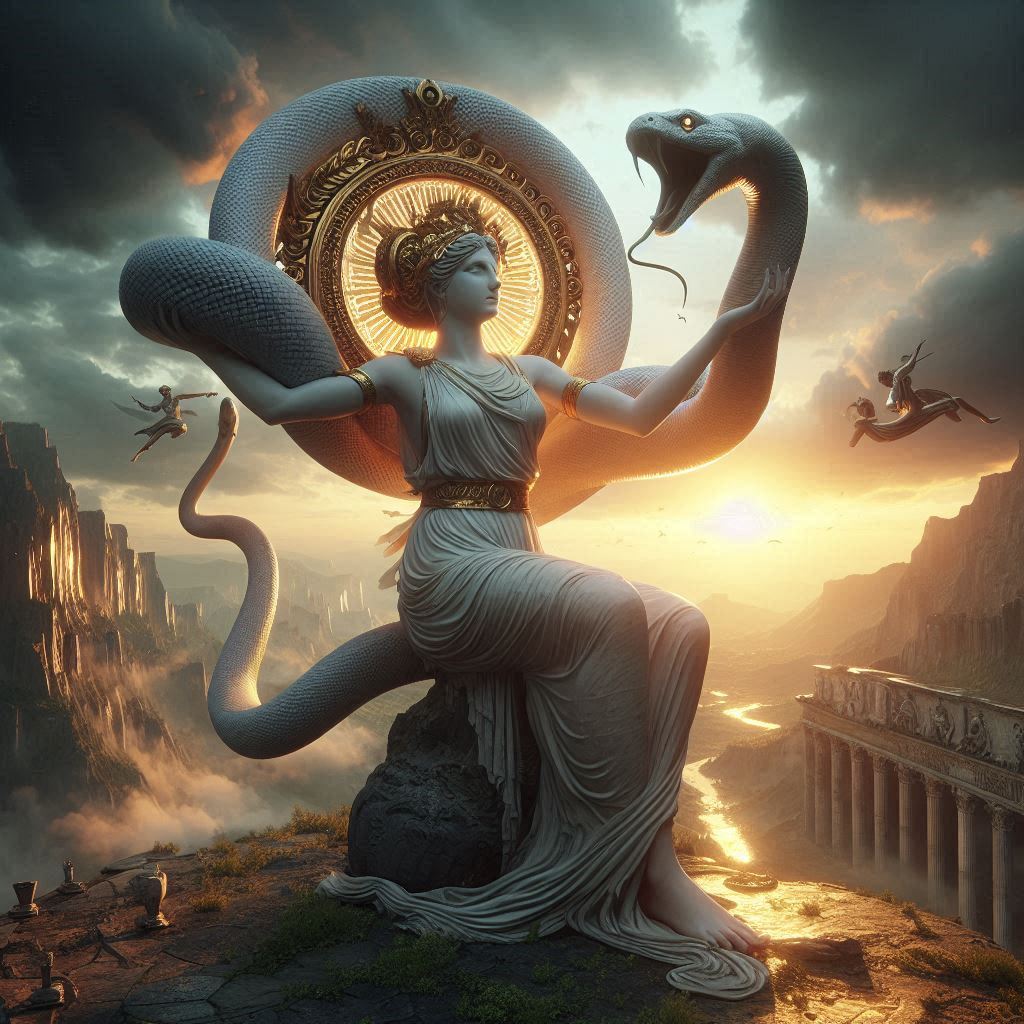Table of Contents
Shinto, the indigenous spiritual tradition of Japan, offers a rich tapestry of gods, spirits, and demons known collectively as kami. These beings are not confined to benevolent or malevolent roles but embody a complex and often contradictory range of forces, each symbolizing aspects of nature, human qualities, and life’s mysteries. Literature, both traditional and modern, reflects these diverse characters and uses them to explore themes central to Japanese culture—harmony with nature, ancestral reverence, the unpredictability of existence, and the moral ambiguity of the world.
This essay delves into how Shinto gods (kami) and demons (oni and yokai) are depicted in literature, revealing insights into their cultural significance and the nuanced ways they embody moral and existential themes.

The Role of Kami in Literature
Shinto kami are more than deities in the Western sense; they are manifestations of forces in nature, ancestors, and spirits that inhabit the world. They may include natural phenomena, animals, or even human traits like courage or loyalty. Many classical and modern works of Japanese literature use kami not only as supernatural beings but as representations of nature’s majesty and humanity’s connection to it.
For instance, the goddess Amaterasu, the sun deity and one of the most revered kami, is often associated with themes of light, life, and renewal. Her symbolic representation as the progenitor of the Japanese imperial line emphasizes divine legitimacy and the interconnectedness of political power, spirituality, and cultural identity. Literary works referencing Amaterasu often explore these aspects, such as The Tale of Genji, where themes of natural beauty and human endeavor align with the reverence for nature embodied by kami.
In Kojiki and Nihon Shoki, ancient chronicles and mythologies of Japan, the stories of kami like Izanagi and Izanami reflect the origins of life and death, creation, and destruction. These themes underscore the delicate balance in nature and the cyclical process of life, which later works of literature incorporate. For example, Izanagi’s journey through the underworld to retrieve Izanami and the subsequent defilement and purification he undergoes becomes a model for narrative themes of loss, redemption, and transformation in Japanese literature, highlighting the inevitability of suffering and renewal.
Oni and Yokai as Symbols of Chaos and the Human Psyche
While kami are typically venerated, Shinto literature also includes darker, more chaotic beings like oni (demons) and yokai (spirits and supernatural creatures). Unlike Western demons that are exclusively evil, oni in Japanese literature embody both destructive and protective qualities. They represent the uncontrollable, sometimes violent forces within nature and humanity—traits that Japanese culture traditionally recognizes as part of life’s duality.
One of the famous literary uses of oni is in the Heike Monogatari, where oni appear as supernatural entities symbolizing the chaos and moral degradation during times of war. Here, oni reflect not only the societal breakdown but also the inner moral struggles of the characters, who grapple with honor, revenge, and loyalty. By presenting oni as agents of both personal and societal disruption, the text emphasizes the consequences of moral failings on the individual and collective level.
Yokai, a class of supernatural creatures that are often mischievous rather than purely evil, populate traditional literature and folklore, serving as metaphors for human fears, desires, and imperfections. The yurei, or vengeful spirits, are perhaps the most evocative in literature. Works like The Tale of the Bamboo Cutter and Ugetsu Monogatari use yurei to explore the dangers of jealousy, unfulfilled love, and betrayal, representing these emotions through ghostly entities who haunt the living until justice or reconciliation is achieved.
In modern literature, the use of yokai as psychological symbols has become prominent. For instance, in the works of Haruki Murakami, supernatural creatures often embody the characters’ inner turmoil, unresolved conflicts, and subconscious fears. In Kafka on the Shore, for example, the protagonist’s encounters with spectral entities and animal spirits symbolize his emotional and psychological struggles. By infusing the plot with yokai and supernatural elements, Murakami expands the psychological landscape of his characters, offering a nuanced depiction of the human psyche in a modern setting.
Moral Ambiguity and Existential Themes
A striking feature of Shinto deities and spirits in literature is their moral ambiguity. Unlike the binary view of good and evil common in Western depictions of gods and demons, Shinto kami, oni, and yokai embody a more fluid morality. This flexibility reflects the Shinto belief in balance and coexistence with nature, which can be both benevolent and destructive. The concept of kami as embodying all aspects of existence means they are neither good nor bad but natural forces that must be respected and harmonized with.
In works like The Pillow Book by Sei Shonagon and The Tales of Ise, the natural world, imbued with kami, serves as a backdrop for human drama and reflects the philosophical notion of mono no aware—an awareness of the transient beauty of life. The kami in these texts embody both joy and sorrow, teaching characters (and readers) the importance of embracing life’s impermanence. This nuanced perspective enables a deeper reflection on existence, as kami remind individuals of life’s unpredictability and the beauty in embracing its ephemerality.
Shinto’s demons and spirits, too, often exhibit complex motivations. In the Noh play Aoi no Ue, the spirit of Lady Rokujo’s jealousy becomes a yurei, or vengeful ghost, who attacks the protagonist’s wife, Aoi. The portrayal of Lady Rokujo’s spirit reflects the nuanced view of demons and spirits not as inherently malevolent but as entities driven by intense, often justifiable human emotions. This complex characterization extends a level of empathy to demonic figures, encouraging readers to understand rather than simply fear these spirits.
Conclusion
In Japanese literature, Shinto gods and demons encapsulate a profound respect for nature, an acknowledgment of moral complexity, and an exploration of existential themes. Through kami, literature emphasizes harmony with nature, acceptance of life’s transient beauty, and the recognition of forces beyond human control. Meanwhile, oni and yokai serve as powerful symbols of humanity’s darker instincts and unresolved emotions, reminding readers of the chaotic aspects of existence and the importance of understanding and balancing these forces.
Shinto deities and spirits in literature represent a distinctly Japanese perspective on life and morality—one that does not insist on absolute dichotomies but instead embraces the fluidity of existence. By depicting these beings with depth and nuance, Japanese authors provide readers with a unique lens through which to examine the complexity of the human experience, emphasizing a worldview that harmonizes with nature, acknowledges moral ambiguity, and celebrates the mystery of life itself.


No responses yet